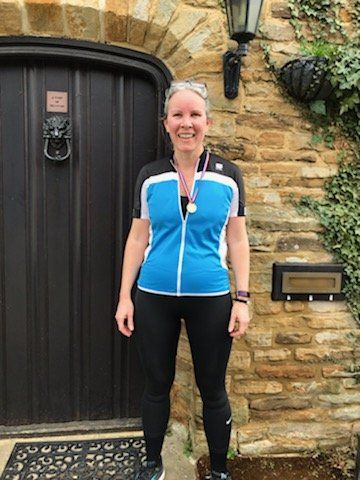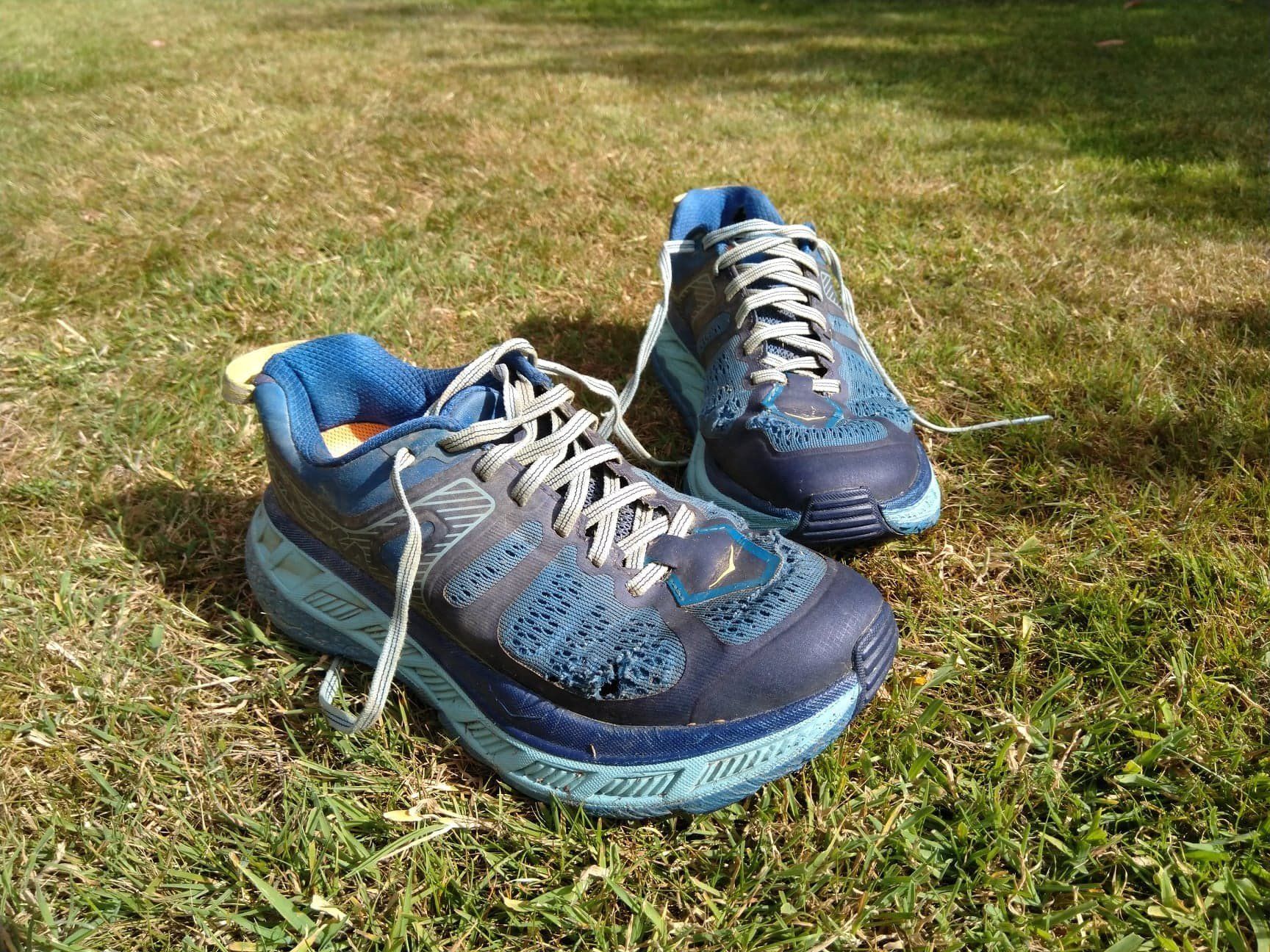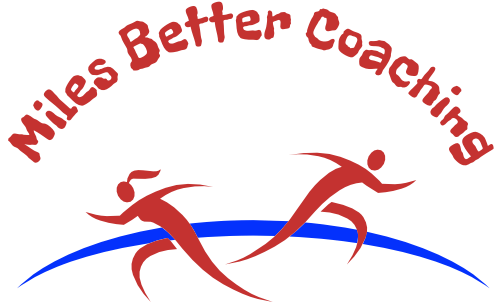Ruth's Lockdown Goal
Elspeth Turner • April 1, 2021
A New Job, a New Home, a New Running Goal - in Lockdown!

Runner Ruth Bushyager began running regularly during this past year, finding that working from home gave her more time to fit in a run. But having recently moved to Horsham and with the restrictions of lockdown she was unable to join a group or running club and so explored places to run on her own.
By February, having already achieved a number of monthly challenges of ‘miles run in a month’ she wanted a new target and decided in March she wanted to run the half marathon distance.
With some virtual coaching and feedback via the TrainHeroic app she gradually worked towards her goal.
Last Saturday Ruth achieved her target running just over the half marathon distance of 22.3km.
Delighted with her run Ruth says "I am amazed to have managed to achieve my goal in a relatively short period of training. Elspeth's experience gave me the advice and training plan I needed - there's no way I would have done it without her."
With restrictions easing, running with others in training or races will hopefully soon be the norm!

Like many runners when lockdown began, I was heading into the final few weeks of marathon training with the intention of running the Newport Marathon in mid-April. Having completed my longest run, things had gone well and I was feeling pleased with my fitness. It was almost time to start tapering. So, the question mid-March when lockdown arrived was, where do I go from here? Within a couple of weeks, it became obvious that not only were Spring races cancelled but all events full stop were postponed indefinitely. I knew I needed a plan for my training as I couldn’t just keep increasing distance and tempo with nowhere to go. Physically and mentally a runner needs a plan and ideally an end goal of some sort too. And so, lockdown training began. Although not quite sure of the outcome, I wanted to do something a bit different and enjoy it. Firstly, with more time available at home I committed to doing circuits and strength exercises at least once, but mostly twice per week. It’s not my favourite part of training but this was a chance to devote a bit more time and without races to ease down for, I had little excuse. Very, very gradually I increased on every exercise. The dining room, although a bit squashed became our gym and having my husband doing exercises at the same time kept us both quite motivated. Next, I decided that I would build a base of steady running, running as I felt, running off road and away from everyone else. I took to the trails, footpaths and hilly terrain right on my doorstep and discovered some wonderful paths I’d never run on before. It’s so easy to run the same tried and tested routes but I ran on new paths and for the first 7 or 8 weeks hardly saw anyone let alone a runner. There were always a few walkers and families on bikes in the first mile but then it was just me, on new territory, no care for pace, taking time to notice nature and no need for social distance dancing. It reminded me why I run. For the first few weeks it was easy ‘pace free’ running with a long run at the weekend with my husband. Starting at 15 miles, which was a good bit less than what I’d been doing for my marathon training, every week I added a mile. Then a few weeks ago we decided to reccie sections of an off-road route which circles Horsham. Designed by Horsham Joggers to run their very successful Bank Holiday 7-stage relay race on, the ‘Horsham Round’ is 29 miles and takes in vantage points around Horsham, such as looking down on Christs Hospital School, that I’d never seen before. Quite soon we had reccied the whole route in sections and so last Saturday we both embarked on the full Horsham Round. Despite scorching temperatures on the days before, on the day it was raining persistently and cool. My husband set off an hour before me and the plan was to catch him by the end. From the get go, no thought went to pace as my concerns were more about not getting lost and because of the rain, keeping warm. The time and distance flew by. Of slight irritation were the gates and stiles, over 40 of them, but in an apt way they gave pause for thought and appreciation of where I actually was – someone’s farm, entering a forest, a churchyard or a golf course. I was delighted with how I coped with my longest run ever. It was a fitting challenge to end the lockdown and 15 weeks ago I wouldn’t have guessed I’d accomplish it so easily and enjoy it so much. I learned from my lockdown training that doing things differently and by feel can be beneficial. Sometimes running can be a bit too time, distance and pace orientated. And of course, of great importance is having a plan to follow, knowing roughly what you will be doing next. It’s very different for each individual and that's why advice from an experienced coach can help. This is why I am in the business of helping runners plan and put into practice what is best for them – I want them to enjoy it as much as I do. If you'd like help, whatever your experience or level, do contact me.

How to Recover ..... quickly Marathon runner, triathlete, cyclist and double World Record Holder of the first female crew to row unassisted on a 9000km, 257-day long journey across the Pacific Ocean, Laura Penhaul knows a thing or two about endurance events. Physiotherapist to the British Paralympic team in Vancouver 2010, London 2012 and Rio 2016; support physio to cyclist Mark Beaumont who cycled round the world in under 80 days; and currently providing virtual support to Nick Butters a runner aiming to run a marathon in each of the 196 countries in the world, Laura has experience and a keen interest in advising athletes about recovery. I interviewed Laura for an article I wrote for the current issue of in Trail Running magazine on her tips and recovery strategies for marathon runners wanting to bounce back after running a Spring marathon. Here’s what she and I suggest - Prepare for Recovery You’ve spent the last twelve or more weeks religiously sticking to a demanding marathon training schedule and now you will have some down time – so make the most of it! The body will take some time to recover both physically and psychologically and inevitably your routine will change. Plan what you are going to do with the time when you would normally go running. Take the opportunity to try some new sports or activities such as kitesurfing, yoga or rock climbing. Maybe visit those friends and relatives you postponed seeing during the marathon preparation phase and start planning where your next races and challenges are going to be and when. This recovery or transition period can be relaxing but also constructive. But make sure you make it so. Take a set period of time to reflect on your marathon performance. Analyse and mentally log what you did well and learn from any mistakes rather than dwelling on them. Remember you can only affect the controllable, so if the weather put a damper on your marathon performance learn from it. From now on focus on the controllable. For example, if it was hot did you hydrate well enough? Were you prepared? Be kind to yourself and enjoy the down time but plan for recovery time and for what next. Your fitness will stand you in good stead for subsequent running events but not if you take six weeks off. Sleep Rest might seem a bit too obvious in recommended post-race activities, but good quality sleep is underestimated in its role as a powerful recovery tool. Biologically it is the most important factor in helping the growth hormones remodel at a cellular level aiding your physical and mental recovery after the effort of the marathon. Try and get a good night’s sleep as soon after the marathon as possible and make sure in the following week that you don’t burn the candle at both ends thinking you won’t need the same energy as when preparing for the race. Sleep helps regenerate the body and doesn’t happen over one night! Nutrition Healthy post marathon nutrition is vital to re fuel the muscles and rebuild the damaged tissues which have been broken down during the marathon run. Ingesting some fluid and food in the immediate optimal window of 30 - 60 minutes after the race ensures the best rate of nutrient absorption. Even if your appetite hasn’t yet returned rehydrate and try to get both some carbohydrate and protein back into the body. Natural sources such as milk, yoghurt and whey protein are best. In the few days following the marathon keep re fuelling your body with a balanced diet. The odd treat is perfectly permissible but get the good nutrients first. Foods that will boost your immunity such as green tea, vitamin C rich foods, leafy green vegetables, antioxidants such as polyphenols found in tomatoes and peppers are a good choice as this is time when your immunity may dip and you could be susceptible to colds etc. Movement The muscles, tendons and joints need some immediate recovery and gentle non-impact exercise such as cycling, swimming or walking in the first three days can be beneficial. If your body feels good then a light jog on the fourth day can be the start of your reintroduction to running. Some people follow the reverse taper approach where they build up the quantity and intensity of what they run in mirror image to the pre-marathon taper. So, if your last long run the week before the marathon was 10 miles then this would be the maximum you would attempt one week after. These suggestions all depend on your level of training and speed of recovery but active recovery will always be better than complete rest. Whatever your level of fitness, your body will have done a considerable amount of running in one direction i.e. sagittal movement. Why not try a session or two of whole body stretching and in particular some rotational exercises? This will help bring back any lost flexibility. Yoga is a great way to experience some beneficial movement patterns that runners don’t experience while running. Three stretches to aid recovery: (contact me directly for diagrams and photos) 1. Thoracic (mid back) mobility To counteract the stiffness which can arise as a result of running in a forward direction for long periods, this exercise will loosen up the mid back, torso and arms. It will help open up the chest to ensure you stay ‘tall’ whilst running, rather than becoming a ‘C’ shape - improving your running efficiency. 2. Hip Opening To open up, stretch and help mobilise the hips actively rest in this position for 2-3 minutes after a run. Ensure the block is under your hip/glute and don’t overarch the lower back. Ensure the highest point of the curve is the front of your hip/groin and not your belly button. Drive your heel away so you maintain an active stretch which helps to reduce the passive extension on your back. 3. For the feet To stretch the whole foot which includes the flexor hallucis, plantar fascia, big toe joint, lower calf and Achilles’ tendon, make sure the sole surface of your big toe is well planted on the floor and gently stretch until the heel is facing north at 90deg. Post marathon is a great time too to have a visit to the physio for a check-up and / or a massage before you embark on the next challenge. Take the opportunity, it could be good use of that extra time you find yourself with. Foam Rollers & the Peanut Massage Ball are good ways of self-massaging tired and tight muscles. Using either will help regenerate and mobilise muscles and fascia and the Peanut Ball in particular can massage the deeper-lying muscle groups and hard to reach areas. They can both be used for full body massaging and relieve muscle tension. They can be used on a table, against the wall or on the floor. With the Peanut Ball, the space between the two balls allows a targeted and effective massage - particularly around the spine – improving flexibility. Extras Immediate post-race routine The following practices are not always easy to do on race day but are practiced by many top athletes. Ice Bath / Cold Water Therapy. This involves 10 minutes immersion in water of 10-12 degrees having the effect of vaso constriction of the muscle cells which helps minimize the build-up of fluid and in the muscle tissue. Fluid is what can cause the muscle soreness in muscles for days after a race and any minimizing effect can be beneficial. Following the Ice Bath, the muscles are gently warmed up again and a 15-minute stint on an exercise bike then helps promote circulation and flush out the waste products in the muscles. Thirdly runners then often compress the muscles with compression socks or leggings which also minimize the pooling of fluid in the muscle tissues and encourage normal blood flow. Bespoke leggings such as those made by Isobar Compression use a body scan to measure the individual’s limbs ensuring the leggings or socks fit with exactly the right pressure according to their body shape. So….. No two runners will recover in exactly the same way. But just as with training there are general principles which can be followed, so find out what works best for you. Listen to your body and remember recovery can’t be rushed, so enjoy the down time.

I was quite nervous for my first athletics session at Horsham. I didn’t know anyone, and was unsure if I really wanted to be there. However Elspeth’s welcoming nature allowed me to easily settle into the group. I wasn’t one of the best runners, especially as I couldn’t run much further than 2000 metres before feeling tired and struggling to maintain my pace. I was heavy footed, and my form was poor and inconsistent, but Elspeth always believed in me. After having Elspeth as my coach for 4 years now, I have improved much more than I ever thought I could. I am now one of the top runners in Sussex, and have competed at national level. This is all due to Elspeth’s guidance. Even now, Elspeth still teaches me new things. Whether it’s about recovery, training, diet or pacing, she knows it all! Elspeth has been a great coach and a great mentor. I feel very lucky to have her experience and expertise at my disposal and look forward to continue working with her in the future. She has taught me so much and has helped me to develop myself both as an athlete and a person.

Having set myself the challenge of running my 2nd marathon in a time of 4 hours, a good 18 minutes faster than the 1st marathon I ran over 18 years ago, I realized I needed help in my journey to get there! Elspeth with her wealth of experience listened to what I wanted to achieve, the time I had available, constraints etc. and based on all these factors came up with a step by step training program delivered through the Trainheroic app. Each session put together by Elspeth had a clear focus, be it on distance, pace, endurance, interval, speed - all building up to the final marathon goal. The feedback and encouragement given after each completed session was invaluable and a powerful driver to want to continue and give it my best shot. The program was totally flexible too; after suffering a minor setback due to a sore foot, Elspeth simply adjusted the schedule until I was back on track. The journey was tough at times but having Elspeth on your side gives such a boost in confidence, that at the end I just wanted to go out and do it! I was incredibly pleased with the result; 2019 Brighton Marathon time of 4 hours achieved, 34th out of 517 in my age category, 519 female out of 6,061! I could not have done it without Elspeth’s professional guidance and dedication and would highly recommended her coaching to anyone who wants to improve their running, at whatever level!
